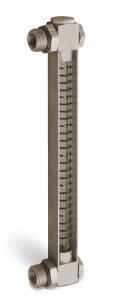If you own or regularly use hydraulic equipment, you know how important it can be for your livelihood or your ability to continue to complete the projects you have started. Also, emergency maintenance or replacement of that equipment can be surprisingly, and even prohibitively, expensive. The best way to prevent large maintenance overhauls and emergencies with your hydraulic equipment is to complete the regular maintenance and inspections to ensure everything is working properly.
How to extend your hydraulic equipment’s life:
Always remember to follow good maintenance practices that are recommended for any equipment, like keeping the equipment clear of debris, clean and painted to avoid rust. Also remember to regularly inspect and lubricate any pivot points to ensure they move freely and stay lubricated. Hydraulic equipment carries a lot of weight on those pivot points, so ensure they are greased on a regular basis, especially if the equipment is used in dusty or hot environments.
With hydraulic equipment, the thing you should be concerned with is the quality and condition of your hydraulic fluid. The hydraulic fluid is the life blood of your hydraulic equipment. The hydraulic fluid provides the motive force behind every moving part in a hydraulic system. Hydraulic fluid doesn’t lead an easy life, so it’s important to monitor it often to make sure it isn’t degrading. Hydraulic fluid is stored in the reservoir at outdoor temperature. Upon starting the equipment, the fluid gets drawn into the hydraulic pump. It is then forced through the valves and hoses of the system, through the pistons and back to the fluid reservoir, all the while carrying thousands of pounds of pressure and being forced through small passages and tight turns.
Monitoring the condition of your hydraulic oil can be done by keeping tabs on a few different things in your hydraulic system:
Hydraulic Fluid Monitoring:
- Fluid Temperature
- Fluid color and appearance
- Differential Pressures
- Fluid level
Hydraulic fluid temperature is one of the most important indicators of the condition of your hydraulic fluid and the condition of your whole system. As your hydraulic system is in use, the fluid is continually pumped through the systems and forced through small passages at high pressures. All this work on the fluid will increase the fluid temperature as the machinery is used. Clogs, kinks, and contaminated hydraulic fluid or failing equipment, like a bad relief valve or clogged cooler, can increase the temperature in your system. For many of these problems, the fluid working temperature is the first indicator that there is or soon will be a problem. Most hydraulic systems will have a working fluid temperature between 110-140 degrees. If your system does not have a built in temperature gauge, consider installing one or using a hand held infrared thermometer.
Hydraulic fluid color and appearance can also tell you a lot about what is going on in your system. If there is excessive wear happening due to a failed component or other problem, the hydraulic fluid will quickly turn from its original color to a dark brown or black. This color change may just be a result of regular wear and can be solved with a routine fluid change, or it could be an indicator that there is a bigger problem. Also the appearance of the hydraulic fluid can indicate other contaminates like air or water. Air in the hydraulic fluid can indicate a leak, or the wrong type of fluid used, and water will leave the hydraulic fluid looking milky or white. In both cases consider changing your fluid as soon as reasonably possible.
Differential pressures across the entire system, or across individual valves, hoses or pistons, can help you diagnose a problem early as well. You have to frequently monitor these pressure levels to know what the normal differential pressure is so you can see when there is a change. These pressures will vary so much from one piece of equipment to the next. Check your operating manual or manufacturers specifications for reasonable values.
 Lastly, the hydraulic fluid reservoir level should be checked regularly and often. A regular inspection of the fluid level in the reservoir is your first indication that there is a leak. Hydraulic leaks are one of the most common problems experienced in industrial hydraulic systems. Leaks can develop from many of the penetrations into the hydraulic fluid system like pump and motor shafts, hydraulic pistons, valves and hoses. Each of the connections has the potential of developing a leak and left unattended to these leaks can leave your equipment crippled or broken.
Lastly, the hydraulic fluid reservoir level should be checked regularly and often. A regular inspection of the fluid level in the reservoir is your first indication that there is a leak. Hydraulic leaks are one of the most common problems experienced in industrial hydraulic systems. Leaks can develop from many of the penetrations into the hydraulic fluid system like pump and motor shafts, hydraulic pistons, valves and hoses. Each of the connections has the potential of developing a leak and left unattended to these leaks can leave your equipment crippled or broken.
To ensure against hydraulic leaks in your system add BlueDevil Hydraulic Stop Leak to your hydraulic fluid reservoir. BlueDevil Hydraulic Stop Leak is safe to leave in your hydraulic system all the time as it will not clog or harm any of the working equipment. BlueDevil Hydraulic stop leak is a unique plasticizer that will revitalize and restore the rubber seals in your hydraulic system, stopping the leak and making sure your hydraulic reservoir stays full, saving you time and money.
BlueDevil Products can be found on Amazon.com or at AutoZone, Advance Auto Parts, O’Reilly Auto Parts, NAPA, and other major auto parts retailers.
Related Articles
Sorry, we couldn't find any posts. Please try a different search.
